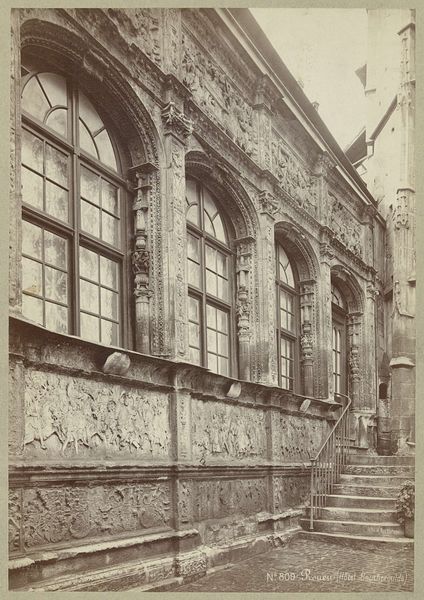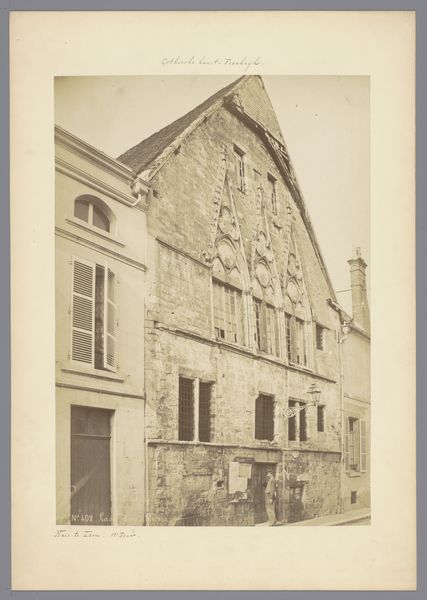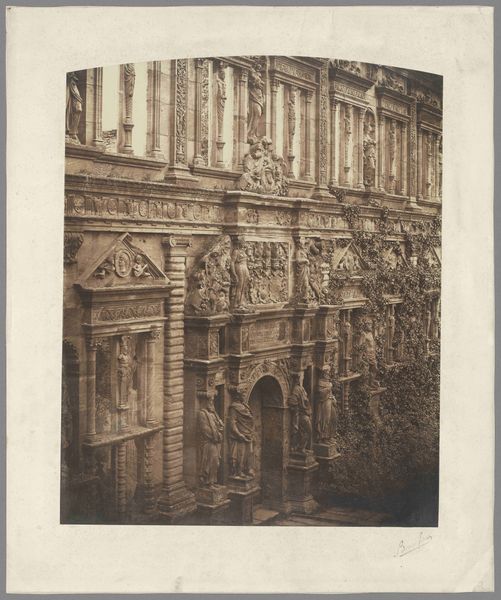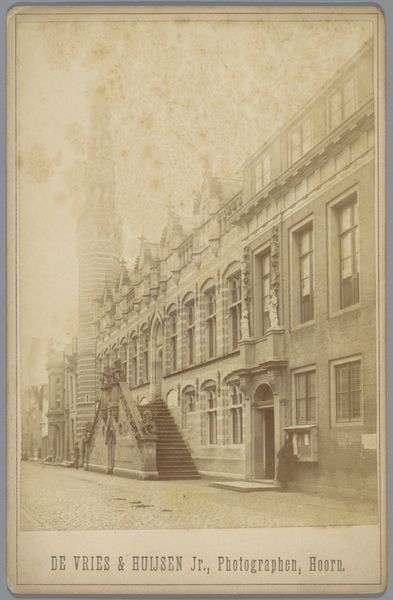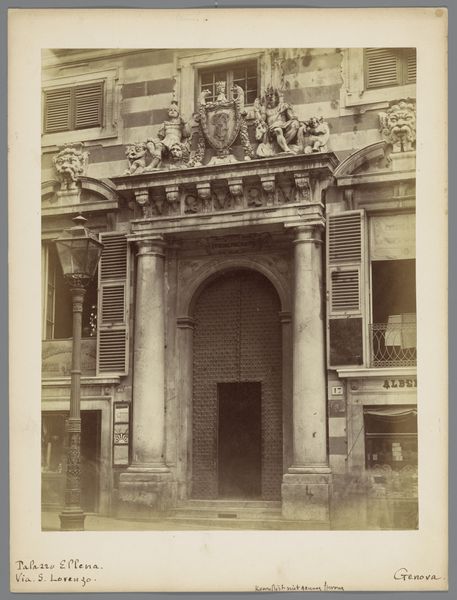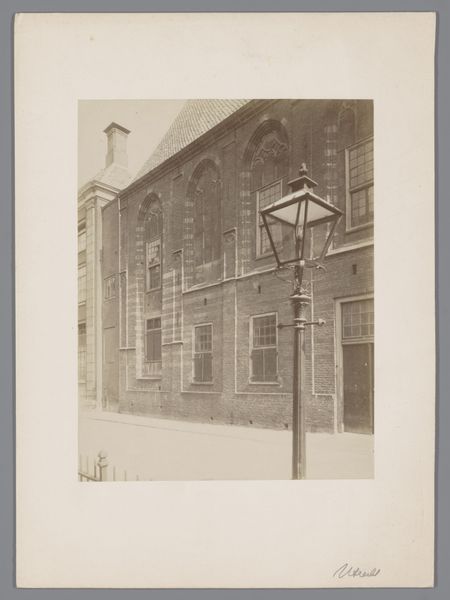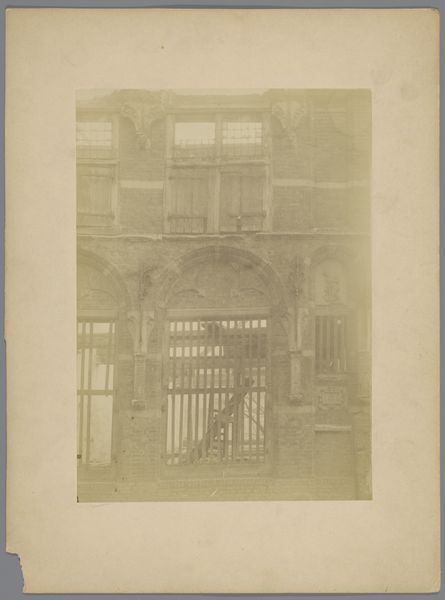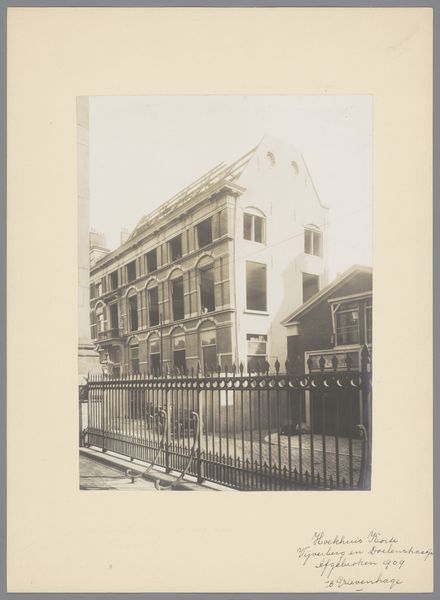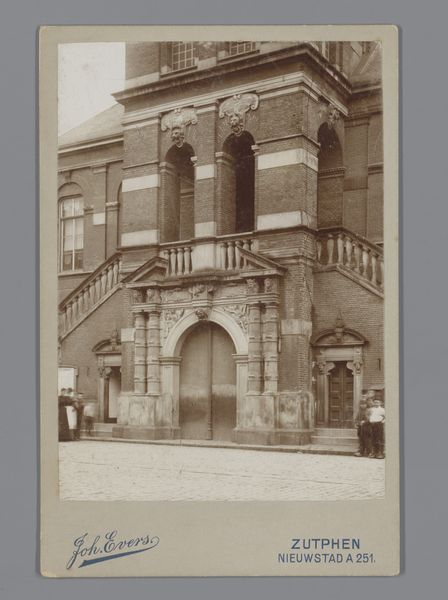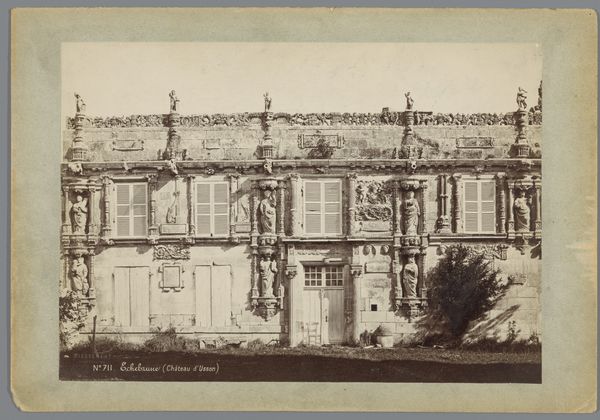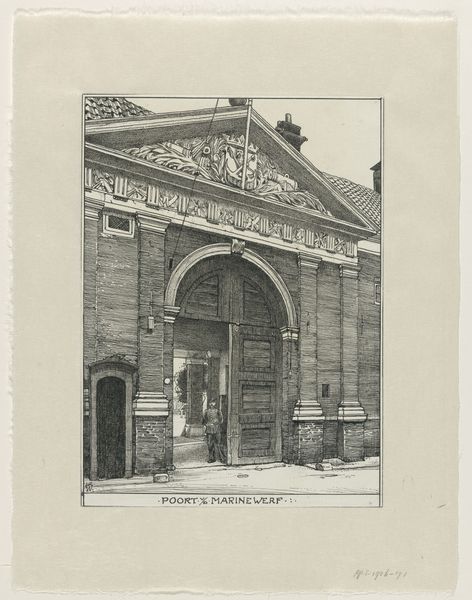
photography, architecture
landscape
photography
architecture
Copyright: Public Domain
Curator: Here we have Robert Charles Ransome's photograph, "Sparrowe's House," taken in 1853. What's your initial take? Editor: An incredible density of craft—a visual feast of carving and detail, yet also strangely sombre. Like a gothic novel distilled into architectural form. Curator: Precisely! And in a sense, that’s what Ransome has done: captured the mood, the aura of a specific moment. He’s less concerned with architectural precision, and more with the romantic feel. The play of light and shadow across those carved panels…it hints at secrets and histories. Editor: Well, let’s consider that "mood," then, as labor frozen. All that carving – repetitive actions consuming the maker’s life. Think of the tools involved: chisels, gouges... and the economics, the social structures that demanded this kind of detailed output from craftspeople. Curator: Yes, but Ransome's work is also an artifact, no? Preserving in fragile photographic chemicals, architecture made by human hands...he creates something eternal. This feels different from your everyday "snapshot," it makes visible what's precious about ordinary places. Editor: Interesting, but a question: precious to whom? Photography in 1853…not exactly democratic access. Sparrowe’s House, for whom was its labour rendered, by whom was the commission paid? Photography in those early days replicated power relationships as much as anything else, and in turn, was made possible by technological advances in the industrial revolution. The lens becomes an instrument for the powerful, in many ways. Curator: And what a sharp lens, allowing this play between the objective, mechanical eye and Ransome's artistic impulse. He doesn't just document, he interprets. It's like he found a story already unfolding in stone and wood and then held a mirror up to it. Don’t you find that captivating? Editor: I find myself caught on the tension: the beauty of the facade as it obscures those whose hands brought it into existence. Ultimately, the house is material, its presence embedded within very particular hierarchies. I'd say the tension *itself* is worth sitting with, allowing for further inquiries... Curator: Yes, to simply sit with it… perhaps allow the details to slowly work their way into the emotional memory.
Comments
No comments
Be the first to comment and join the conversation on the ultimate creative platform.
